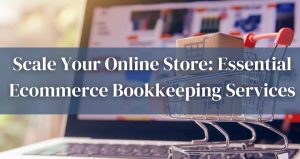Joni Mitchell had a different idea and inspiration about clouds when she penned a song back in 1967. It was also back in the 1960s where the origins of the Internet could be traced. And today, the Internet is the main component of what is called cloud computing. Industries such as insurance, automotive, health, finance, and education are the top users of cloud computing. Depending on the companies and the industry they belong to, the rationale for adopting cloud computing ranges from reducing the cost of capital expenditure to gaining efficiency.
One business segment that should rise as a top user of cloud computing is the supply chain and logistics services. If you run a company in this industry and haven’t thought about using cloud computing, the following discussion is for you.
Overview of Cloud Computing
What is cloud computing? Let’s strip it down to four main concepts: the Internet, data, applications, and anytime-anywhere. As a business owner providing services to customers, cloud computing is your ability to store and access data needed by your business using the relevant software over the Internet at any given time or place. It could be about uploading data on recently closed deals, e.g., a new insurance policy or providing your customers with a warranty and repair management system like in the automotive businesses.
Cloud computing became popular in the technology world sometime in 2006, when Internet giants like Google and Amazon started using the term. Others point to a much earlier timeline in 1996 and executives at Compaq Computer as the genesis of the word.
Why It’s Good for the Supply Chain and Logistics Business
 Imagine tracking the whereabouts of your trucks and drivers in real-time and knowing almost instantaneously if there’s a delay due to road accidents. Imagine knowing the status of your warehouse inventory immediately as soon as a forklift takes out a pallet from your rack. Here are a few more things you should consider regarding cloud computing for your logistics business.
Imagine tracking the whereabouts of your trucks and drivers in real-time and knowing almost instantaneously if there’s a delay due to road accidents. Imagine knowing the status of your warehouse inventory immediately as soon as a forklift takes out a pallet from your rack. Here are a few more things you should consider regarding cloud computing for your logistics business.
Broader coverage. Supply chain and logistics cover a whole slew of parts. Mismanaging one part causes a chain reaction that’s going to spell b-a-d! A cloud-based supply chain application allows you to better manage the entire scope of your operation—from receiving inventory from suppliers, warehouse storage, transportation, and handling reverse logistics. Cloud computing is scalable and customizable, so you gain efficiency and flexibility.
It’s real-time. The cost of transporting and storing goods can be affected drastically by unforeseen events like the weather or the market crashing. You need to make quick adjustments to your price when moving and storing your goods. Cloud computing software allows you an easy way to make this adjustment in real-time and have this reflected at the endpoint of your business processes, e.g., issuing quotations and receipts. If you’re able to monitor your inventory with data going back and forth between your PC and the cloud in real-time, you have greater flexibility in, for example, making a forecast and placing orders from suppliers, which will speed up your stocking process.
Analytics. Do you want to increase traffic on your website? Use analytics. Do you want to take the shots that yield the best result in a basketball game? Use analytics. Acquiring, storing, and transporting goods rely on patterns of activities. Information, like which route is typically the fastest to take on a specific time of a day and which equipment requires the most maintenance, can all be analyzed to determine the most efficient process using cloud computing.
Cloud computing can also be accessed by your entire team, which makes collaboration easier. Most businesses are now adopting the “cloud-first” approach. You should consider implementing it in yours.





